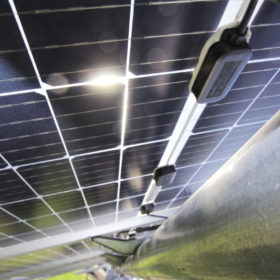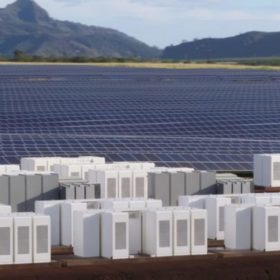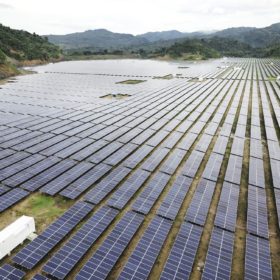The best battery for grid level energy storage
A new paper published by researchers at China’s Tianjin University examines the state of the art in grid level energy storage, outlining the pros and cons of various battery technologies being deployed on grids around the world, and remaining challenges that could be overcome if research is pushed in the right direction.
Raising the efficiency of polycrystalline cells with new luminescent EVA film
Chinese researchers have developed a pure EVA film, which they claim can enhance the conversion efficiency of conventional crystalline solar cells by around 0.50%. The film is able to convert UV light into strong visible light.
Green hydrogen costs projected to decrease by up to 60% by 2030
A new report from Hydrogen Council predicts that the cost of renewable hydrogen production will fall drastically by up to 60% over the coming decade due to the declining costs of renewable electricity generation and the scaling up of electrolyzer manufacturing. Thanks to its optimal renewable resources, Australia will be among the countries most favorably placed to contribute to the development of the hydrogen economy.
The long read: All about albedo
With analyst predictions going as high as 40 GW for annual bifacial demand by 2023, it is imperative for stakeholders across the industry to understand the behavior of these modules in the field. Ground albedo and the way that diffuse and reflected light hits the rear side of the modules are the key concerns. A better understanding of these factors, gained from sophisticated yield-modeling simulations and bifacial test installations all over the world, has already helped to identify the challenges and opportunities in optimizing projects to maximize bifacial energy yield.
A clean energy world would support millions of new jobs
A study from Finland’s Lappeenranta University of Technology has predicted solar and other renewables can provide a global energy jobs revolution – just as four European operations revealed recent struggles.
The long read: Back to the drawing board
The combined use of trackers and bifacial modules can result in significant power gains, but they are not distributed equally. For single-axis tracking R&D teams, the process of optimizing the output from arrays that use bifacial modules requires experimentation and a steep learning curve in terms of what is going on underneath the module.
Energy Storage: Top 5 Li-ion battery trends to watch out for
The Internet of Things, cloud analytics and artificial intelligence will find their way into battery management too, enabling OEMs to precisely measure and improve the life of their deployed assets. Lower battery costs and increased adoption in high-power commercial electric vehicles and grid support are the other trends shaping the market.
Half-cut modules from Sharp
The Japanese electronics giant has unveiled three monocrystalline half-cut cell modules said to provide 2-3% better performance than standard, full cell panels. The claimed efficiency of the modules exceeds 19.5% and Sharp says power output ranges from 330-395 W.
Stretching exercises for crystalline silicon solar cells
Researchers from Saudi Arabia’s King Abdullah University of Science and Technology have created flexible solar cells made of crystalline silicon. They claim to have stretched a crystalline silicon cell’s surface by around 95% while maintaining conversion efficiency of around 19%.
The long read: Quality management and our new robot overlords
When talking about processes to ensure quality in renewable energy – whether in the production of materials or the operation of a power plant – it can be a struggle to avoid excessive jargon and keep things simple enough to translate into effective improvements on the ground. Experienced project manager Nabeel Ismeer decrypts some of the geekspeak from the world of quality.















